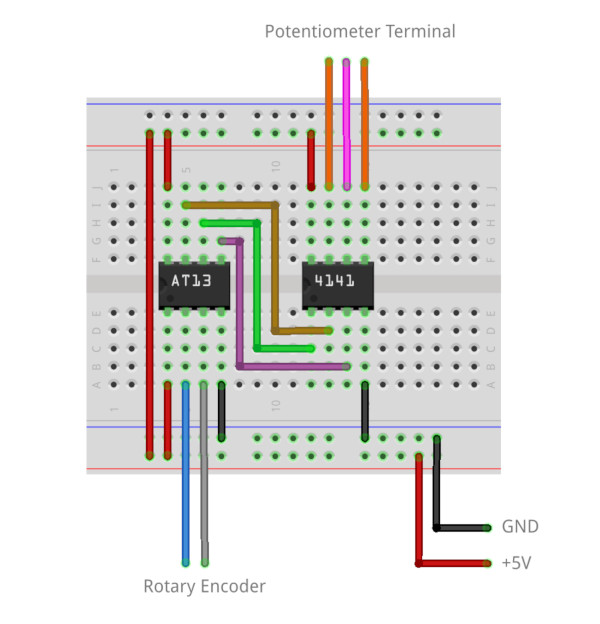The main objective of this project is to create an experimental prototype of a digital potentiometer using Microchip's MCP4141 IC. MCP4141 is available with end-to-end resistances of 5KΩ, 10KΩ, 50kΩ, and 100KΩ. This potentiometer-module can drive MCP4141 with any of the above mention resistances.
To drive the MCP4141, this module use ATtiny13 MCU. This MCU control MCP4141's resistance, based on the rotary-encoder events. ATtiny13 is an 8-pin, low power 8-bit MCU with an internal oscillator. The key reason to pick this MCU is its availability and lower price. Due to a lack of hardware-based SPI, this system use bit-banging SPI implementation to drive the MCP4141 IC.
To reduce the board size, this module employs only 3 components. Which including ATtiny13, MCP4141, and rotary-encoder. The dimension of the PCB design given for this module is 26.16mm × 29.72mm.
This is an open-source hardware project. Compiled firmware, PCB designs, schematic, and source codes related to this project are available at the GitHub project repository.
 |
| 3D view of MCP4141 based digital potentiometer PCB |
To drive the MCP4141, this module use ATtiny13 MCU. This MCU control MCP4141's resistance, based on the rotary-encoder events. ATtiny13 is an 8-pin, low power 8-bit MCU with an internal oscillator. The key reason to pick this MCU is its availability and lower price. Due to a lack of hardware-based SPI, this system use bit-banging SPI implementation to drive the MCP4141 IC.
To reduce the board size, this module employs only 3 components. Which including ATtiny13, MCP4141, and rotary-encoder. The dimension of the PCB design given for this module is 26.16mm × 29.72mm.
 |
| Breadboard wiring diagram |
This is an open-source hardware project. Compiled firmware, PCB designs, schematic, and source codes related to this project are available at the GitHub project repository.
Comments